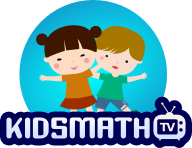1st grade math tips
Children entering the first grade are usually six or seven years old. This age can be very difficult, especially when children start to learn new things. This sensitivity can cause them to feel confused or even afraid, because everything around them is new.
Math is one of those new things. Children start to learn it in the first grade, and for some, math can be very difficult because they do not understand it immediately, but if their teachers and parents use visualizations and explain what math is and how to use it in everyday life, children will slowly start to feel more comfortable when it is time to learn and utilize math skills.
In first grade math classes, children will work on a standard level. Generally, children at this age will begin to understand numbers and symbols and will be taught about time and how to tell hours and minutes. They will also begin to learn a variety of concepts, including how to: count money; perform addition and subtraction; combine and separate sets using objects; solve addition problems through ten; perform comparisons (more, less, and same); identify half of a whole object; and more.
By the end of first grade, children will know many things related to math, including how to: add and subtract single-digit numbers; count money; estimate and predict simple outcomes; identify place values out to the hundreds place; work with patterns and sequences; measure length, volume, and weight; count higher than 100. They will also become familiar with the concept of symmetry, work with geometric shapes, and identify major fractions (1/2, 1/3, ¼, etc.).
Parents should take advice from their children's teachers to help them learn math and start using it in their life. Through fun games and activities, children will remember the rules of mathematics and will start to implement it in their life as they grow.



